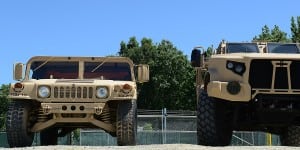
Component by electronic component, the Army is slowly installing modular open communications architectures on its legacy tactical trucks by requiring new technologies to adhere to set technical standards.As new equipment like advanced precision navigation and timing (PNT) systems are installed on Humvees and other wheeled Army vehicles, the Combat Support and Combat Service Support Program Office is requiring manufacturers to build them to a set of standards called Vehicular Integration for Command, Control, Communication, Computers, Intelligence, Surveillance, Reconnaissance (C4ISR) /…

 By
By 











